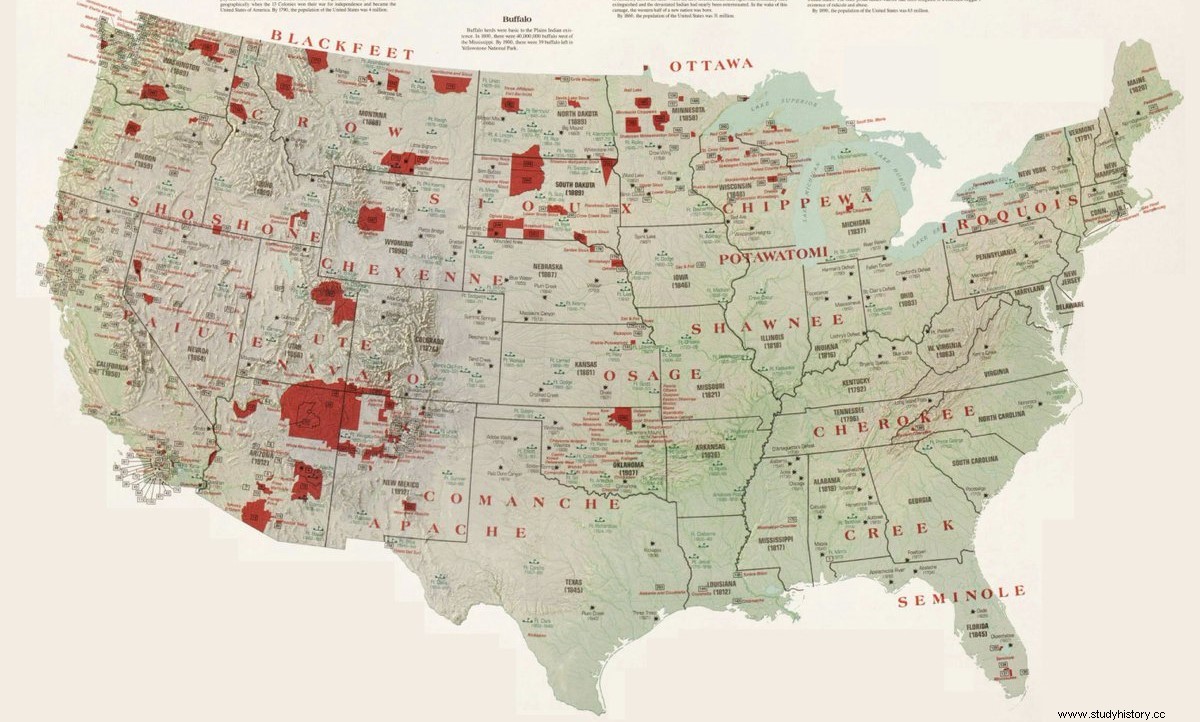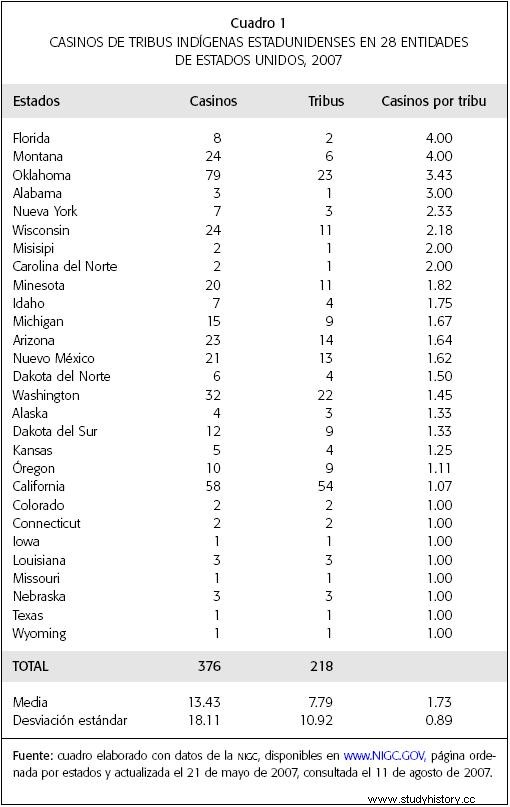The 19th century was a disaster for the native peoples of North America. The westward expansion of the United States came at the expense of their land, their freedom, and often their lives, a massive displacement that occurred over a surprisingly short period of time. Between 1810 and 1895, the United States swallowed the continent through military force and deceptive negotiating tactics, such as the Dawes Act (1887), also called the General Allocation Law, which effectively abolished tribal self-government and forced assimilation. The government broke the collective land system and implemented a system of individual parcelling:communal land was divided into individual parcels (80 hectares for each head of the family and 40 hectares for orphans), destroying the ability of many communities to sustain themselves with their own land -the surplus was kept by the government to sell to white settlers-; the natives were forced to live on plots, on many occasions far from their relatives, losing traditional customs, and the collective control of the land was ended, facilitating access to private and governmental interests over natural resources. Before long, unable to make a living under the model imposed by the "whites," most gave up trying to farm, sold their land to whites for little money, and were left landless.
This video shows the loss of their land
Today there are 573 federally recognized First Nations, approximately 229 of these nations are located in Alaska while the others are spread over 35 other states. According to the last official census dating from 2010, the indigenous population is 2.9 million people, which represents only 0.9% of the total population of the country. There are currently about 310 indigenous reserves:some peoples have several reserves, others share a single reserve among several, and some have none. The territories of all the reserves in the country represent just over 2% of the total area of the US.

Indian reservations
And what about the casinos on the Indian reservations?
Indian casinos play a decisive role in the politics of the United States federal government. In reality, these indigenous gaming industries are in the interest of the US government, because they reduce the portion of the budget that goes to the tribes. In 1988, during the Reagan administration, Congress passed the Indian Gaming Regulatory Act , by which Native American tribes could open establishments dedicated to games of chance on their land and were also exempt from paying taxes derived from their economic activities. In addition to clearing the American conscience for the theft of land from the Indians, it involved the development of a significant gaming industry on the Indian reservations, supposedly with the objectives of maintaining "tribal sovereignty" and achieving greater political and economic autonomy. In reality, it meant further reining in tribal governments through the National Indian Gaming Commission and reduce the federal fund allocated to the tribes -60% of the profits obtained must be allocated to projects that improve the living conditions of the communities-.

Critical voices point out that with the arrival of the casinos to the reserves, corruption, delinquency and alcoholism have increased; that the indigenous tribes have begun to put aside their customs and traditions and adopt an eminently capitalist way of life, and that the benefits they generate only reach a few. On the contrary, others focus on the economic issue:increase in the per capita income of the Indians (in 2006 these casinos entered 25,100 million dollars, compared to the 6,000 million obtained by the set of casinos that operate in Las Vegas), the work they generate with the casinos themselves and other related establishments (hotel chains, restaurants, gas stations, stores and shopping centers) and the increase in tourism.
Sources:The US’s century-long destruction of Native American land, The danger of the privatization of indigenous community lands
